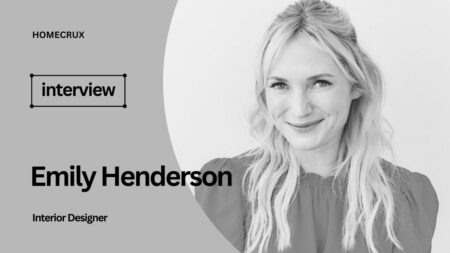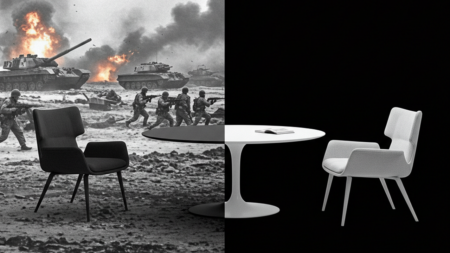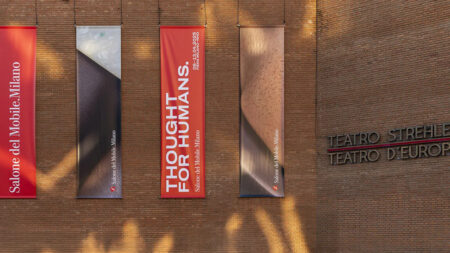The world is awash with designers. Thousands of them come and go but very few are successful in cementing their legacy in the global design sphere. And those who do, not only project and invent their concepts most innovatively but also challenge the thematic and theoretic notions of design. Ludovica Serafini and Roberto Palomba, are a designer duo renowned by Palomba Serafini who believe “form does not follow function and vice versa.”
The work and life partners indeed believe that function and form together find a reason to exist and coexist. Homecrux caught up with Ludovica Serafini and Roberto Palomba as the high-profile Italian designer couple celebrates their studio’s 30 years in design.
Homecrux (HC): Congratulations on the amazing 3-decade journey! What specific arrangements you have made to celebrate the 30th anniversary of Palomba Serafini Associati?
Ludovica Serafini + Roberto Palomba (PS): Going on vacation, where we will think about what we could organize for the sixtieth anniversary.
HC: That’s sweet! 30 years is indeed a long time. I’m sure it must have been full of lots of ups and downs?
PS: A project created by four hands always begins with continuous exchange and sharing. Each of our creations is the result of constant dialogue and the exchange of ideas.

HC: Take us through your years growing up. Where did this affinity for design come from? Did you both always want to become designer/architect?
PS: Both of us graduated in Architecture from the University of Rome, a city rich in history and architectural beauty that deeply influenced our educational journey. Architecture and design didn’t just become our profession merged from a personal passion that we have cultivated since our days of study.
HC: How did Roberto Palomba and Ludovica Serafini meet? And how did they come about the idea of a studio together?
PS: We met at a ball in Rome, both architecture students in the Eternal City. After eight months of persistent courting, we started dating. From that day, we have never been apart, and from there, in addition to our life together, we began our professional dream. In 1994, we founded the Palomba Serafini studio. The places we come from have certainly contributed enormously to our creativity. I come from Sardinia, a wild and authentic land, rich in ancient history and deep-rooted traditions. Sardinia offers breathtaking landscapes, with rugged coastlines, and lush mountains, which have influenced my approach to design.
Ludovica, on the other hand, is from Rome, a city that is a true open-air museum, with a layering of historical eras that blend into a single, magnificent metropolis. Rome is a city of contrasts, where the ancient mingles with the modern, and Baroque opulence coexists with Renaissance sobriety. The fusion of these two visions, the Sardinian and the Roman, has allowed us to develop a distinctive and innovative approach.
HC: How do you balance your personal and professional life, considering there ought to be differences in opinions?
PS: We work through shared values to create innovative projects, and this synergy allows us to evolve together, maintaining consistency in our intentions and goals. By sharing the same political and aesthetic vision, we find it very difficult to disagree. Our collaboration is based on mutual respect and a deep understanding of each other’s artistic sensibilities, which makes our work harmonious and coherent.

HC: You are a multidisciplinary design studio with products ranging from lighting and furniture to bathroom accessories and home furnishing. How do you maintain a holistic approach to each subject?
PS: We found inspiration in the works of architectural and artistic masters, as well as in everyday life and personal experiences. This passion has guided us in our professional path, driving us to constantly seek new forms of expression and innovation in the world of architecture and design.
HC: What is the design philosophy at Ludovica Serafini+Roberto Palomba studio?
PS: We don’t like the term “style”. When we talk about our work, we prefer to focus on the values that accompany a project rather than leaving a distinctive mark. Style can refer to something that ends up in a closet after six months. Our projects, on the other hand, are faithful companions of the soul and enduring over time. If we talk about approach, it is definitely global, yet at the same time, tailor-made, and carefully adapted to the needs and desires of each individual client.



HC: Do you believe the saying ‘Form Follows Function’ is not only limited to furniture and relevant in lighting and other disciplines as well? What’s the definition of design for you?
PS: Form does not follow function, and vice versa. Function and form together find a reason to exist and coexist. When we say, “form follows function,” it presupposes a hierarchy where function is prioritized over form, but the opposite would also be wrong. There is no hierarchy in design; there is a balance and a synergy between emotion and performance, between the empathy of the object and its use. Establishing a constant hierarchy is, in our opinion, a crime that shows a failure to overcome the modernist complex.
HC: How do you perceive design festivals and events across the globe? Do you think these festivals bridge the gap between designers and brands or have they merely become a commercial tool?
PS: Trade shows, festivals, and events have always been opportunities for meeting through the exhibition and contact with the real product. The perception of an object through only media, magazines, catalogs, or social media is something that has nothing to do with the final use of these objects. Trade shows are moments of comparison both between people and with the object.
HC: AI is the biggest buzz word. Designers like Philippe Starck are incorporating AI in their work. Do you plan using AI as well? Do you think AI might replace designers at some point?
PS: AI represents the synthesis of existing things, mixed in an absolutely random and uncontrolled manner. The synapses of a human brain are billions of times more powerful because, unlike AI, which uses existing elements to create new things, the human brain is capable of creating things that have never been created before by drawing from the Platonic hyperuranion, which, we are sorry to say, is not part of AI. If designers of Starck’s caliber are using AI today, it is because they have understood that it is an additional tool at the service of creativity.
HC: What are the future projects that you are working on? Could you share your studio’s ambitions for the next ten years?
PS: It’s a question we’re often asked, and honestly, our curiosity constantly drives us to push beyond every limit. So, we would say that our design dream is everything we haven’t yet drawn, even in the architectural field. Every future project represents a new challenge to tackle and an opportunity to explore new ideas and concepts. Our passion for innovation and creativity compels us to always seek new paths to tread and new forms to explore, making each new project an exciting and stimulating adventure.
HC: Could you name your favorite project and favorite designer. Any design magazine that you like to read?
PS: Surely. Achille Castiglioni, who was able to approach the project with the curiosity of a child and the maturity of an old man. Each time, he was able to synthesize the project by focusing on and highlighting the fundamental elements of an iconic narrative that is still irreplaceable today. We would like to see how AI (referring to the last question) could create the Stilo or the Toio. Also for his ability to be free, focusing on the quality of his projects. Our favorite object is definitely the Shanghai (Sciangai) by Zanotta.


As for Italian magazines, definitely Elle Decor, masterfully run. We feel very connected to their content and approach. For foreign magazines, we would say ARCh and OpenHouse, for their ability to read projects in terms of light density and thus the theme of emotion.
We thank Ludovica Serafini and Roberto Palomba for taking out time for this insightful conversation!
Follow Homecrux on Google News!




